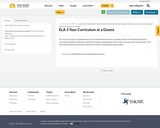
Grade 3 ELA Curriculum at a Glance
- Subject:
- English Language Arts
- Material Type:
- Teaching/Learning Strategy
- Date Added:
- 12/06/2018

Grade 3 ELA Curriculum at a Glance
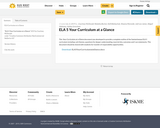
ELA Curriculum at a Glance
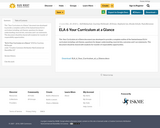
This "Your Curriculum at a Glance" document was developed to provide a complete outline of the Saskatchewan ELA 6 curriculum including: unit themes, questions for deeper understanding, must do lists, outcomes and I can statements. This document should be shared with students for transfer of responsibility opportunities.
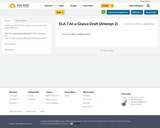
A snapshot of the ELA 7 Curriculum to assist teachers in planning and organizing their year and in choosing texts.
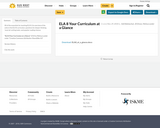
All of the essentials for teaching ELA 8.
An overview of the units in the ELA 8 curriculum, questions for deeper thinking, 'must do' writing tasks, and popular reading choices.
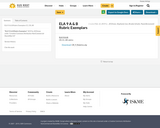
These 4 point rubrics were developed to provide a consistent and common resource that aligns with the Saskatchewan curriculum and provide opportunities for transfer of responsibility between educator and student. These rubrics are designed to be edited by educator and student.
ELA 9 A & B Rubric Exemplars can be used as is or adjusted to the classroom or individual student.
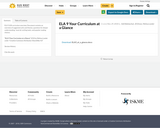
ELA 9 A/B curriculum overview.
Document contains an overview of suggested units and themes, questions for deeper understanding, 'must do' writing tasks, and popular reading choices.
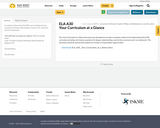
A complete outline of the ELA A30 course including: themes, questions for deeper understanding, "must do" lists, outcomes, and I Can statements.
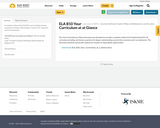
A complete outline of the ELA B10 course including: themes, questions for deeper understanding, "must do" lists, outcomes, and I Can statements.
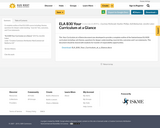
A complete outline of the ELA A30 course including: themes, questions for deeper understanding, "must do" lists, outcomes, and I Can statements.
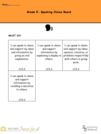
Kenaston School developed these ELA Choice Boards to support their project-based learning.

The following are a list of writing rubrics and writing to be taught from grades 1-12.

The Saskatchewan Ministry of Education has complied a number of resources for fostering an inclusive environment in the early years. Resources include handbooks, online modules, and videos.
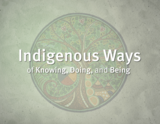
This video resource, created for teachers and students in Saskatchewan, offers insights from four cultural groups: Anishinabee, Cree, Métis, and Dene. It includes personal stories that emphasize the significance of the seasons and how they influence community life and traditional practices. You’ll discover reflections on the essential roles of elders and knowledge keepers, as well as the importance of kinship, family, and community connections. The resource also addresses Treaty education, storytelling, traditional foods, ceremonies, land-based learning, along with personal narratives about residential schools. By sharing these stories and perspectives, we enhance our understanding and knowledge as we progress on the journey of truth and reconciliation.

This magnetism teacher‰Ûªs guide is one of four activity guides‰ÛÓplus a background guide for teachers‰ÛÓthat provide students with the opportunity to build on science concepts related to Earth‰Ûªs magnetism and its changes, as detected by THEMIS magnetometers located in schools across the U.S. The four activity guides have been used in different types of classes, from physical science and physics classes, to geology classes and astronomy classes. The excitement of actually participating in the THEMIS project helps motivate the students to learn challenging physical science concepts.
The background guide for teachers, the THEMIS GEONS Users Guide describes the important role that terrestrial magnetism plays in shaping a number of important Earth systems. It also explains the basic operating principles behind magnetometers‰ÛÓparticularly the system you are now in the process of using to investigate magnetic storms at your school.
Earth‰Ûªs Magnetic Personality is the fourth and final guide, which was developed with the goal that students can work directly with the THEMIS magnetometer data. The guide covers vectors, the x-y-z magnetometer plots, creating a prediction for aurora using the magnetometer data, calculating the total magnetic field strength and observing it over months, and the waves in Earth‰Ûªs magnetic field excited by large magnetic storms.

Don't do the work if you don't have to.
Ditch That Textbook has lots of Google Slides, Drawings, PowerPoint and Jamboard templates that you and your students will just love.
Included are: Social Media Templates, Game Templates, Interactive Activities, Graphic Organizers, Lesson Plan Templates, Communication Templates, Feedback Templates, Exit Ticket Templates, Back to School Templates,
End of Year Templates.
Just to mention of few of the templates, check out: Jeopardy, Family Feud, Who Wants to Be a Millionaire, Comic Strip, Caption This, Treasure Map and many, many more!!!
It's easy to use! Download or make a copy. Adjust as necessary. Enjoy the fun and learning!
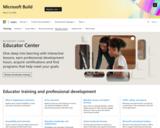
Training modules teach you how to customize and use microsoft technologies for individualized learning needs.

In this activity, students use a paper plate to build a model that shows why lunar eclipses don’t happen during every full moon.

As classroom managers, teachers regularly use commands to direct students to start and stop activities. Instructors find commands to be a crucial tool for classroom management, serving as instructional signals that help students to conform to the teacher's expectations for appropriate behaviors.

With ideas from EfficienTEACH you can teach better and save time for what matters most.
This project provides you with research-based teaching practices you can use in class tomorrow to save time AND teach better.
Explore ideas to help you with:
- student engagement
- communication
- memorization
- practice/activities
- assessment
- material/content
- feedback
- routines and habits
- discussion
- teacher tasks
- reflection
- community and relationships
- lesson planning
- teacher wellness